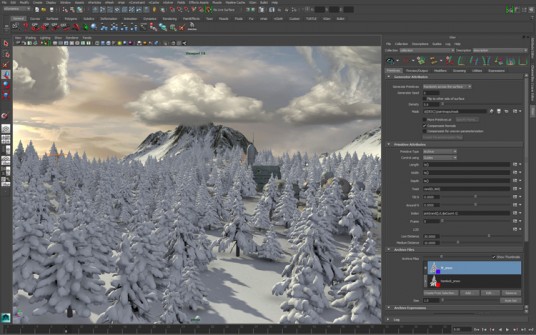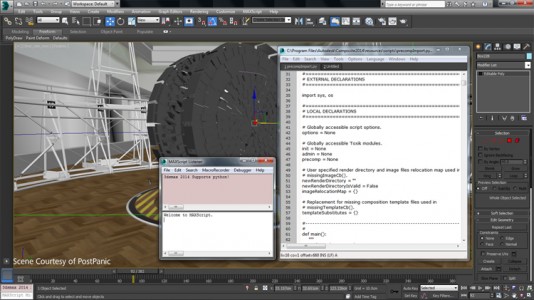XGen from Walt Disney Studios and Python scripting highlight new features being added for subscription customers.
Next month Autodesk will roll out an update for subscription users of Maya 2014 and 3ds Max 2014. Normally we don’t make news items out of such updates, but the technology being added to these two particular updates will be of immediate use to a large portion of Maya and Max users.
The Maya 2014 extension will bring more technology from the 2012 license agreement between Autodesk and Walt Disney Pictures, in the form of the XGen Arbitrary Primitive Generator. XGen allows for a more art-directed approach to computer generation of hair, fur, feathers, and foliage. Autodesk made the deal in 2011; Disney remains the primary developer of the technology, while Autodesk forges the implementation inside Maya.

XGen technology was first presented at Siggraph 2003 as a research paper. Disney went on to use the technology in seven feature animations and other projects. The most noticeable use of the technology was in creating Rapunzel’s gorgeous hair in Tangled. Disney describes XGen as “a comprehensive system for generating arbitrary primitives on a surface.” In striking the deal with Disney, Autodesk said in 2011 that it was making “studio-quality tools accessible to our industry’s smaller players.”
In addition to XGen, Maya subscribers will also receive a new plug-in for support of Bullet Physics, the open-source engine for digital content. A similar plug-in is already part of 3ds Max.
3ds Max 2014 users on subscription will receive new support for the Python scripting language. Artists will be able to execute easy-to-learn Python scripts from MAXScript and the 3ds Max command line; in addition, they will be able to access a subset of the 3ds Max API (application programming interface) from Python scripts, including the ability to evaluate MAXScript code.

The updates will be available for download in early September.
Related
Autodesk lands exclusive deal to distribute Disney “Tangled” technology





